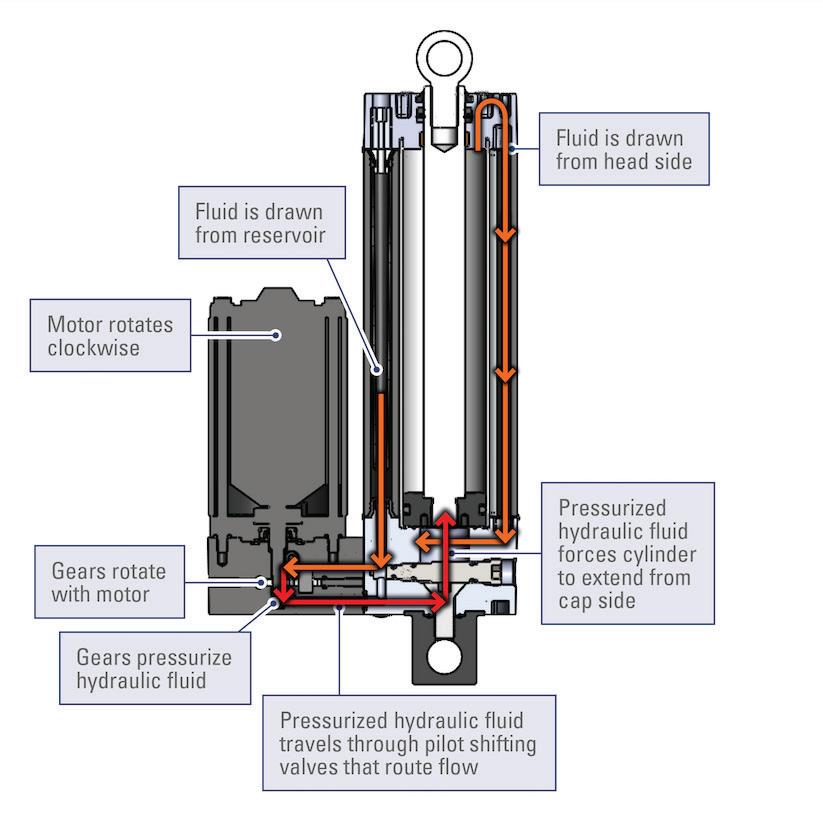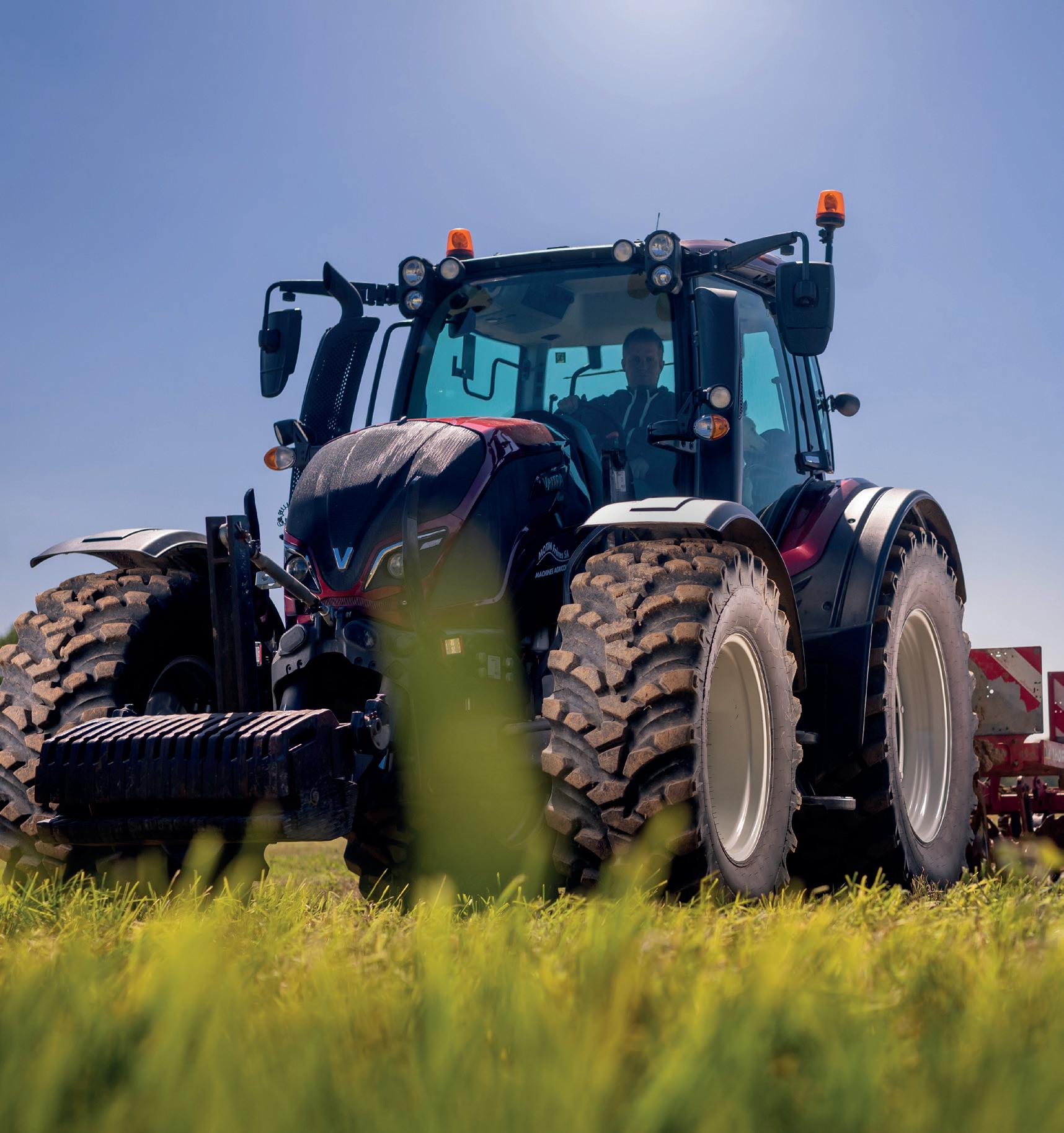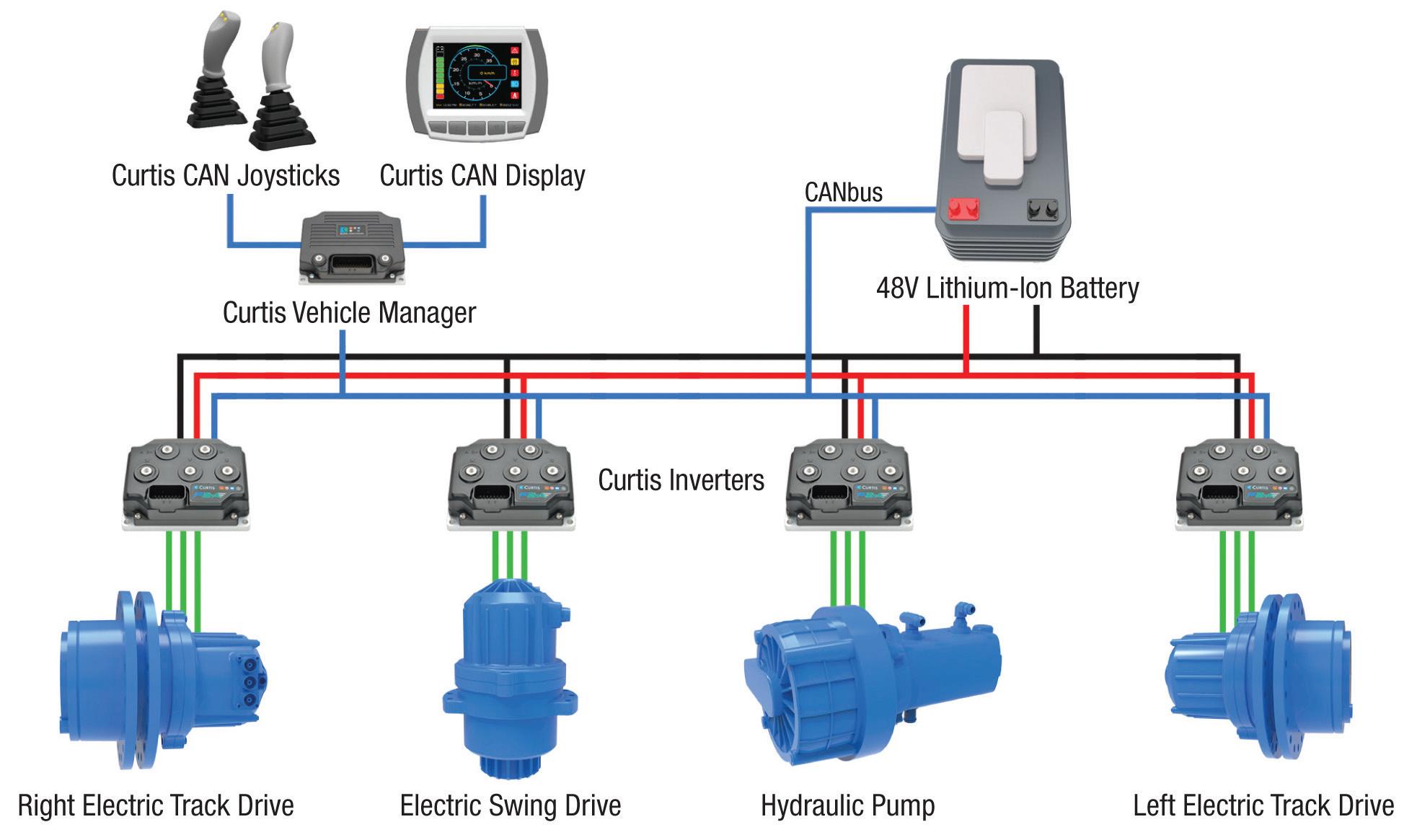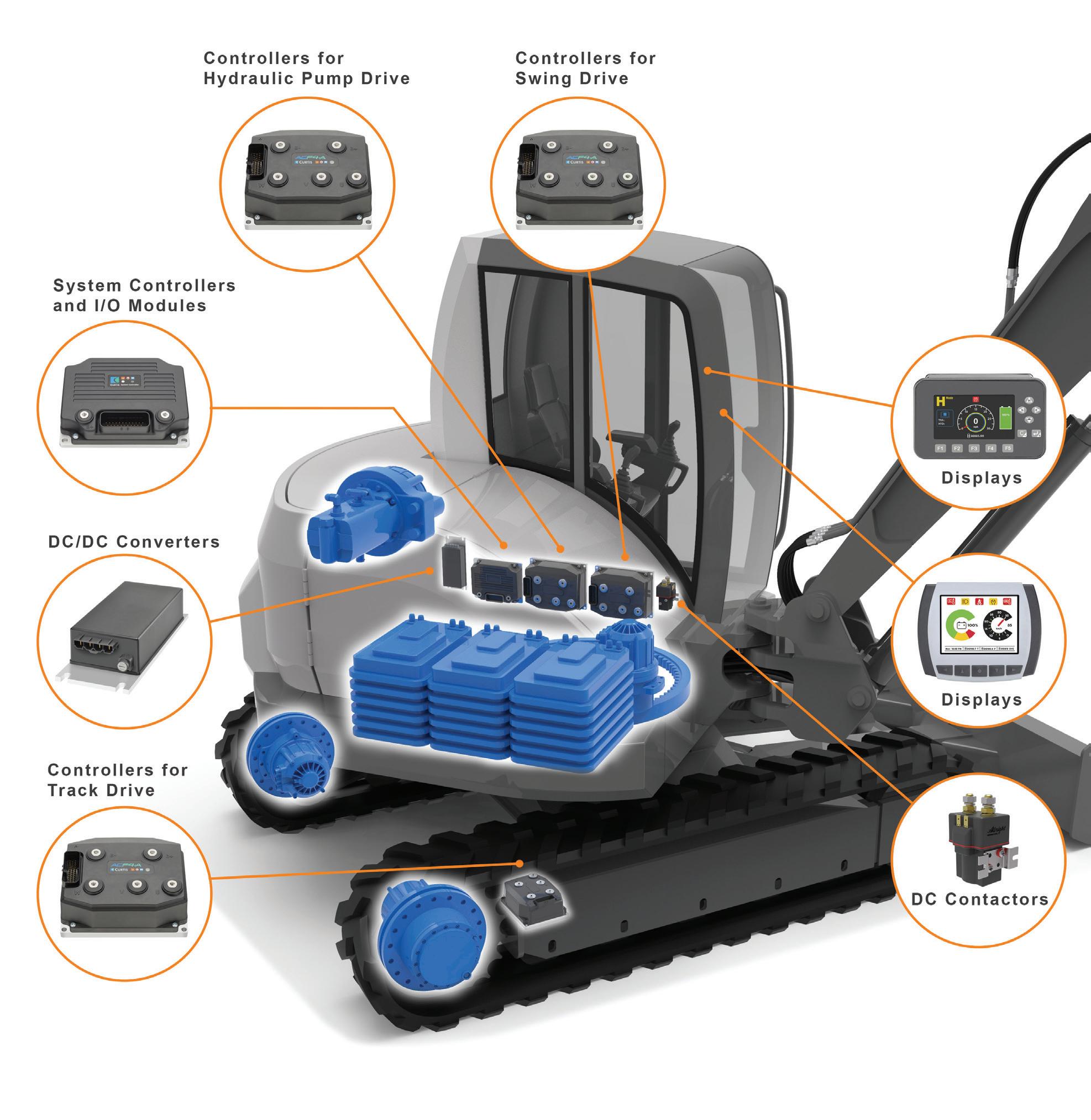
5 minute read
Electrical & Electronics: Actuators
Electro-Hydraulic Actuators Offer Ability to Handle HEAVY LOADS in TIGHT SPACES
contributed by Matt Palmer, Product Line Specialist – Industrial Linear Actuators at Thomson Industries Inc.
Compared to hydraulic cylinders, electro-hydraulic actuators can offer many benefits including increased load handling and a more compact installation space.
System designers have long given hydraulic cylinder-based motion control systems first consideration in applications requiring handling of loads upwards of 3,000 lb., mostly because of the high power density of the cylinders themselves. But when the designer factors in the large space required for the intricate infrastructure needed to achieve that power, that power density becomes much less attractive.
Now, however, thanks to technology that builds hydraulic motion control into an envelope smaller than a conventional electromechanical unit, designers and end-users can enjoy the power conversion
The Thomson H-Track electro-hydraulic linear actuator handles force up to 4,800 lb. and features the smallest mounting envelope in its class.
advantages of hydraulic fluids without the expense, rigidity and need to clean up after conventional hydraulic cylinder-based systems.
Electro-hydraulic linear actuators are fast becoming the motion designer’s choice over hydraulic cylinders for a wide range of heavy load handling in outdoor equipment, military and many other applications.
Structural differences
A hydraulic cylinder-based motion control system converts electrical energy into motion using an assembly involving oil reservoirs, electric motors, pumps, oil filters, relief valves, and di rectional valves. The speed desired and the size of the cylinder dictate the size of the pump needed, which then deter mines the size of all other components. The higher the required speed, the higher the cost of the system and the greater the operating space needed. An electro-hydraulic system, in contrast, embeds the equivalent of that infrastructure into an envelope that is about the same size as a conventional electromechanical actuator (Figure 1). An electric motor rotating clockwise turns gears that pressurize the hydraulic fluid. Valves open to draw fluid from both the reservoir and head side, and control delivery to extend the rod. On retraction, the motor runs counterclockwise, reversing the operation, and returning the fluid to the reservoir and the opposite side of the piston. For loads of up to 4,800 lb., miniaturizing that infrastructure has significant advantages over hydraulic cylinders in power density, maintenance requirements, location versatility, cleanliness and cost, while handling comparable shock loading (Figure 2).
Load capacity
By replacing the gear and lead screw assemblies of conventional electromechanical actuators with a compact hydraulic system, electro-hydraulic actuators can move loads up to 4,800 lb. Loads of this size have typically been relegated to hy draulic cylinder-based systems. This load range is more than 1,000 lb. greater than the capacity of a conventional electro mechanical actuator.
Power density
For raw power density, electro-hydraulic designs have a distinct advantage. While the electro-hydraulic actuator and hydraulic cylinder may not be too much different in size, the support infrastruc ture needed to operate the hydraulic option consumes significant space.
Cleanliness and safety
Electro-hydraulic actuators also have an advantage in cleanliness and safety. External leaks at pipe and hose fittings of hydraulic cylinder systems occur over time due to vibration and other factors. When these leaks happen, the cylinder leaks a film of oil into the plant environment with every stroke.
Internal leaks present an even greater maintenance challenge. Leaks inside the pump, pressure controls, directional valves and cylinder convert pressure and flow to heat or wasted energy, which will reduce actuator speed. In industrial settings, leaks also cause odor and present slipping hazards.
Max Load Capacity Power Density Cleanliness & Safety Additional Maintenance Location Versatility Shock Handling Cost - Initial Cost - Expanding Existing Unit Cost - Lifecycle Hydraulic Cylinder-Based Systems >21 kN (4,800 lbs.) High Low High Low High High Low High Electro-Hydraulic Actuators 21 kN (4,800 lbs.) Highest High None High High Low Low Low
Figure 2: Comparison of hydraulic cylinder-based systems and electro-hydraulic actuators.
Location versatility
Because they don’t need an elaborate support infrastructure, electro-hydraulic actuators make it more eff ective to move control closer to the point of application. Hydraulic cylinders are far less than ideal for any application that is hard to access. If a cherry picker vehicle designer wants motion control to tilt the bucket, for example, it would be far easier to run electrical wire up to the boom than hydraulic fl uid transport tubing. This solution also removes potential concerns about fl uid dripping into the environment.
Shock loading
Historically, hydraulic technology has been better able to handle sudden shocks. However, embedding this technology into electro-hydraulic actuators gives them shock-loading benefi ts on par with hydraulic cylinders.
For new application designs requiring handling of loads up to 4,800 lb. and speeds up to 4 in. per second, electro-hydraulic actuators have signifi cant advantages over hydraulic cylinder-based systems in power density, cleanliness of operation, versatility and lifecycle costs. |
Figure 1: Extension cycle Thomson H-Track electrohydraulic actuator.

THOMSON INDUSTRIES
Head to the Web
Read the full article online at www.oemoff highway. com/21134975.

Curtis Instruments
Your Electrification Partner
For the electrification of construction equipment or mobile machinery, think Curtis. With over 60 years of electric vehicle expertise and a global record of innovation and product excellence, we are ready to partner with you in every stage of electrification with hybrid diesel-electric and fully electric solutions. Curtis will support your engineering team at every step in the product development, from initial prototype design through to production release. Our inverters/motor speed controllers and electric control systems set the standard for electric power at 48V and beyond. Highly reliable Curtis components are available in a range of models suitable for every type of application. Our sophisticated electric drive systems are packed with cutting edge features and functions that make vehicle design simple. We will work with you as needed, whether it is to assist with the design and development of electric traction systems, On-Engine Generator Control or to assist with the design of the complete control system for all mobile application types, including complex electro-hydraulic control systems. Curtis has partnered with leading manufacturers of batteries and electric motors to help OEMs design new electric powered dumpers, mini excavators and wheeled loaders. All benefit from proven Curtis 48V technology and the robust, reliable and sustained performance that was previously assumed to be confined to diesel engines.

See for yourself. We are ready to help you.
www.curtisinstruments.com










